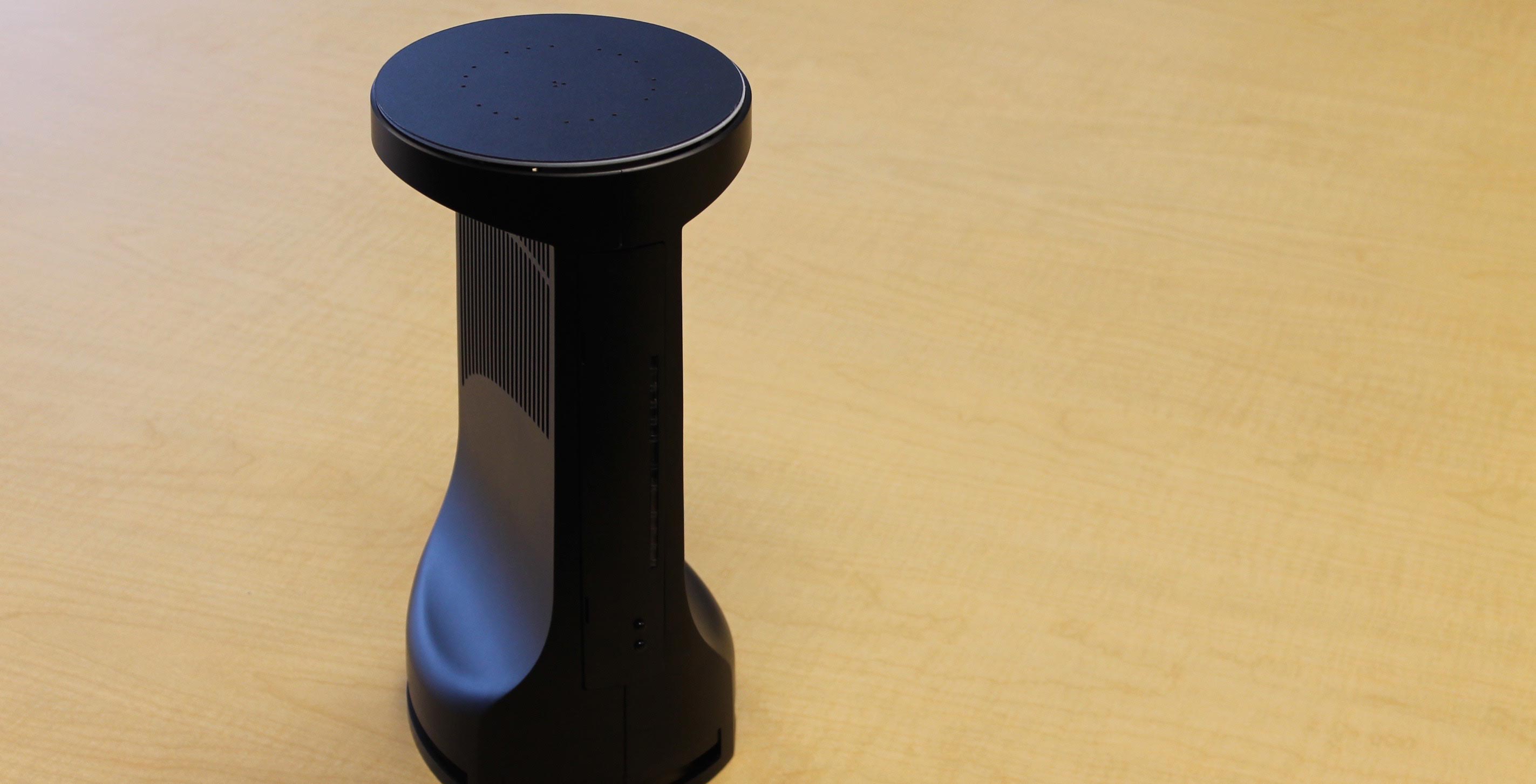
Qualcomm has debuted a new mesh Wi-Fi platform that supports voice AIs and aims to act as a “universal translator” for smart home devices using various connectivity types.
The news came as one of the chipset giant’s reveals at Computex in Taipei, along with unveiling of a router reference design (shown above) that manufacturers can build off of to more quickly get to market.
Qualcomm has been influential in the recent rise of mesh Wi-Fi products like Google Wifi or Linksys Velop. Currently, the company’s IPQ40x8/9 network SoC is used in nearly every mesh networking product, including those from Google, Eero and Linksys.
“We’re kind of this invisible hand pushing the market, because it clearly meets consumer needs,” staff marketing manager Jesse Burke told MobileSyrup.
“We’re kind of this invisible hand pushing the market, because it clearly meets consumer needs.”
The new Qualcomm Mesh Networking Platform is built on the IPQ40x8/9 and targeted at manufacturers and internet service providers. One of its most important features is the IoT Connectivity Feature Suite, which lets users simultaneously and compatibly use Wi-Fi, Bluetooth, CSRmesh connectivity and 802.15.4-based technologies on one network, while supporting older communication protocols, cloud services and software frameworks as well.
“Let’s migrate all those radios down into that same platform,” said Burke. “Instead of the Philips Hue Bulb being separate, any device you buy can now just connect to the network.”
Burke adds that once all of those IoT devices work on the same network, the network has the ability to do more things — like theoretically being able to alert the network you’re going to sleep and having all the various IoT devices perform nightly rituals (i.e. turning off lights and locking doors). This is made simpler with the integration of voice commands, another element Qualcomm has baked into the platform.
“We have a quad-core processor that can handle voice recognition software, noise cancellation software,” says Burke, “And it’s quite capable of slotting in a microphone array […] as well as any audio out.”
The company also notes that it supports APIs to the most popular cloud-based assistant applications, meaning customers may soon see a Google Wifi setup that packages in Google Assistant, for instance.
“You have your router and your voice AI. If one of them is going to flow in to the other easier, it’s going to be the voice AI into the routers,” says Burke.
“You have your router and your voice AI. If one of them is going to flow in to the other easier, it’s going to be the voice AI into the routers.”
Additionally, the platform’s self-organizing (SON) feature suite intelligently completes hand-offs between points and automatically manages the network, switching users between nodes if, for instance, what they’re doing requires more or less power.
Its ‘carrier-grade features’ allow carriers to integrate deeply with mesh networks — in particular, letting them access software for cloud-based diagnostics for things like monitoring and remote troubleshooting.
Burke thinks carriers are likely to adopt mesh Wi-Fi routers in the near future, noting that: “They’re interested in minimizing the amount of times you call them, and keeping the customer in their ecosystem as much as possible.”
As for backhaul — there are a variety of options that can be used to maximize the performance of mesh networks, including 802.11ac, 802.11ad, 802.11ax or Powerline technologies.
Burke says the company hopes to get new mesh devices built on the platform to market quickly, and to aid in that ambition it has created its Mesh Network Referencing Design, which brings customers “60 to 80 percent” of the way to commercialization by providing them with a hardware design for their mesh Wi-Fi sets.
The company notes “a number of [its] customers are working with” the reference design already.
Image credit: Qualcomm
MobileSyrup may earn a commission from purchases made via our links, which helps fund the journalism we provide free on our website. These links do not influence our editorial content. Support us here.


